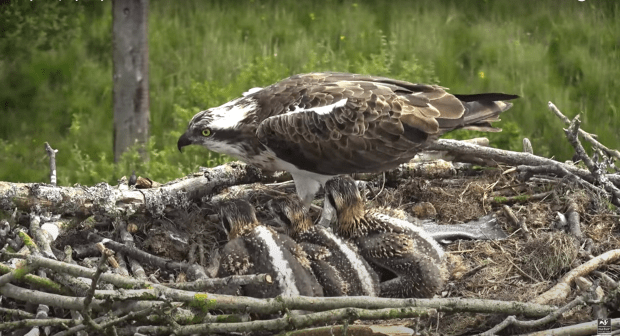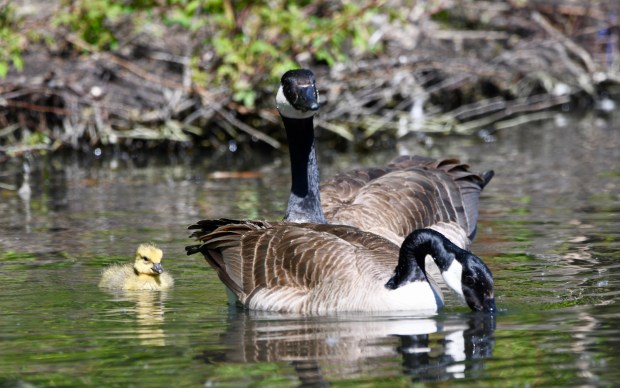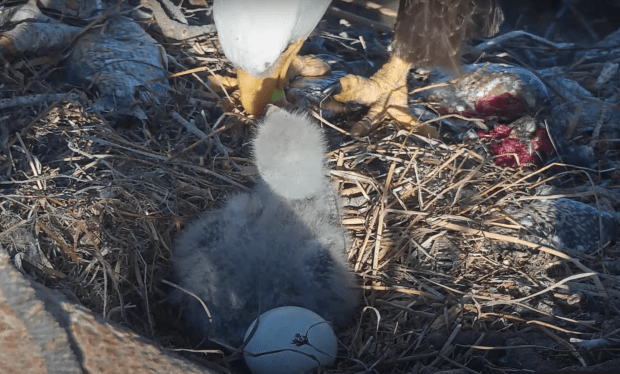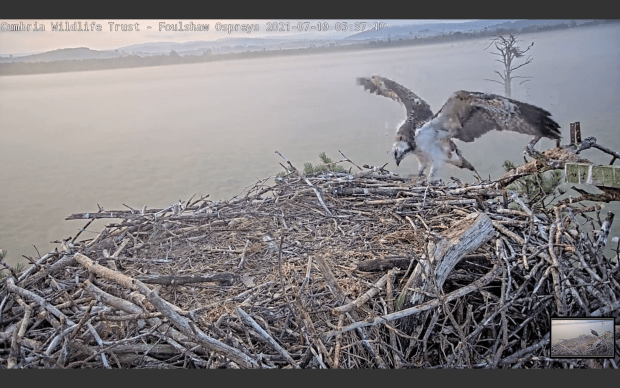20 August 2022
Good Morning Everyone! It’s Saturday and the sun is shining down golden this morning in Winnipeg. There is no forecast for rain. Everyone living here wishes we could have shared some of the moisture with those places that need it. It is going to be 26 degrees. Friends have seen trees full of Turtle Doves south of me. That is a hint that fall is coming. They are on their way home for the winter. The plan will be to go out and check on the ducklings later today when they are all out paddling. The garden animals have been quiet – or I should say the Crows and the Blue Jays. Are they still mad at me for going away for two days? or have the Blue Jays already left? and the crows, too?
I grew up in Oklahoma and although I have not visited since 2014, at that time, you could drive 100 mph on the turnpikes. The State of Oklahoma is proposing more turnpikes – and there is growing opposition because of the harm it will bring to wildlife. Here is the story:
Kenneth Kujawski posted a video of our Little Bit ND17 perched at the St Joseph River. You really have to look closely to see him – but all images much appreciated. Below the top video is a second. I believe you can hear Little Bit 17 wheeing….because he doesn’t like 16 sitting beside him. This time 17 flies off the perch.
In mid to late August each year the ospreys migrate from the UK to their wintering grounds in west Africa. It has taken just 14 short weeks for the osprey chicks to hatch, fledge and grow to a point where they are ready live independently. The chicks leave one at a time without their parents and make their own way south to the rivers of Gambia, Senegal and Guinea Bissau.
It is unusual to be seeing so many birds visiting their nests at this time but, it is always special to see them as we have no idea when they will leave their territory and head to their winter homes. Today the camera operator at the Dyfi Osprey Platform in Wales, home to Idris, and Telyn, zoomed in to give us some magnificent images of Idris. Idris continues to bring fish for Paith, the third hatch, and Padarn, the second hatch. Telyn is the daughter of Maya at Rutland. Telyn hatched in 2013. Idris’s history is unknown. He has been breeding with Telyn at Dyfi since 2020. There is some thought that Idris was usurped at the ON4 nest in Wales by Monty’s son Z1, Tegid (2016).
Each is just slightly different. Idris is a grand fisher and he is often called ‘Daddy Long Legs’ for his extremely long legs that help him with his catch. What a magnificent male you are, Idris.
Telyn was last seen a week ago. His oldest daughter, Pedran, was last seen on the 11th of August. It is ‘assumed’ that they have both left the territory to go south. Idris will remain at the Dyfi Nest until all of his daughters have left for migration. He will absolutely not leave until then.





This is 7B1, Padarn. Just look at that amazing crest!

Padarn has decided to rest while she waits for Idris to bring her lunch.


That is Paith, 7B2, on the right with that great big mullet that Dad delivered. No fear, there will be something left for Padarn.

How cute.

A friend sent me an image from the Patuxent #1 nest today. The male is certainly keeping this osplet well fed! Goodness. I am not certain that isn’t the largest crop I have ever seen on a juvenile. And just look! Dad has another fish. I sure hope he gets to enjoy it! But no. He will leave it on the nest for later.

Many chicks were waiting and calling for food today – they would have loved to have had that fresh fish from the Patuxent nest.
The two at Loch of the Lowes called and called but Laddie LM12 did not appear with a fish. The one on the nest does not look to be starving!!!!!!

This young lady, the eldest of the three girls, 1H1, was hoping that her dad, Blue 33, might get a fish to her right away if she sat and called and called. Blue 33 will not leave his gal hungry. Never. Maya was still at Rutland as of the 18th. I did not see her today.

The procedure that seems set in 60 million years of development with Ospreys who migrate is always this: the female leaves a few weeks ahead of the fledglings. Then the fledglings who are now fit fledge. Then Dad. So then, this brings me to a number of very serious questions regarding the Loch Garten nest. AX6 Axel has not been seen 15 August at 0635. The female, Asha, unringed, was last seen on 14 August at 1018. The male chick, 1C2 is still coming to the nest to be fed. Why would the male leave before the chick? Has he been usurped by an intruder? There has been a constant intruder who is now arranging the twigs on the nest. It is KL5, a two year old, hatched at Loch Ness. Is the chick being fed off the nest by an injured dad? is it possible 1C2 is catching its own fish in the loch?
While the Uk, European, and North American Ospreys are preparing to take their winter break, the nests in Australia are getting busy. Everyone is watching Xavier and Diamond very closely – hoping for eggs! Diamond was in the scrape box on the water tower at Charles Sturt University in Orange today putting the final touches on the indentation in the stones.

For those of you that do not know Xavier and Diamond, they are quite the pair. Neither is young but I do not believe anyone is sure of how old they actually are – or how young! Xavier is tiny and cute and tries so hard to please Diamond. There is one thing that Diamond does not like to eat and that is a European Starling. She will if she is starving but, normally, she will refuse the prey offering from Xavier if it is a Starling. She much prefers the parrots and a nice fat pigeon if Xavier can find one in the country. They are plentiful in a city like Melbourne but rarer in Orange. Parrots on the other hand are somewhat plentiful.
Xavier has brought Diamond a Starling and stashed it in the corner for her.

Xavier comes in and removes the Starling – hopefully it will enjoy the nice meal! I never thought of birds as ever being picky eaters but Diamond doesn’t like Starlings and Victor doesn’t like trout. I wonder which others have quirks?

You can watch Xavier and Diamond on this streaming cam. There is also a cam looking directly out front and one on the water tower.
Mum and Dad are incubating three eggs at Port Lincoln. In the image below, Mum has returned from her break and is urging Dad to get up!
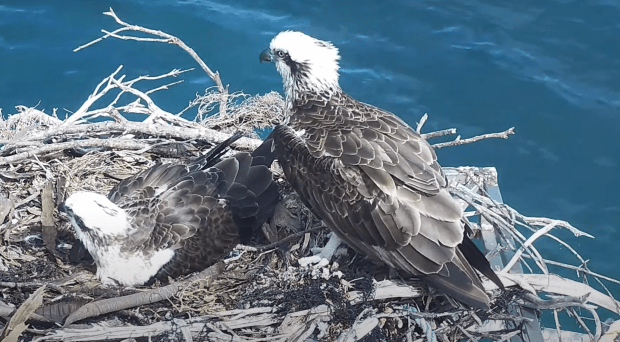
Port Lincoln posted two images of Ervie showing that his talon is growing – ever so slowly. Little stub on left foot of our dear Ervie. Thankfully he watched Dad and got the hang of fishing in the right spots and that talon no longer means he can only catch puffers!
Isn’t this the most magnificent image of Ervie?


The Sea Eagle nest is the only one with little ones. Port Lincoln is incubating and the falcons are ‘thinking’ about eggs both at Orange and in Melbourne, I presume. This is the latest from Melbourne CBD-367 Collins St Falcons and this is early!!!!!!!!! So excited.

The Sea Eaglets are getting around all over the nest now.
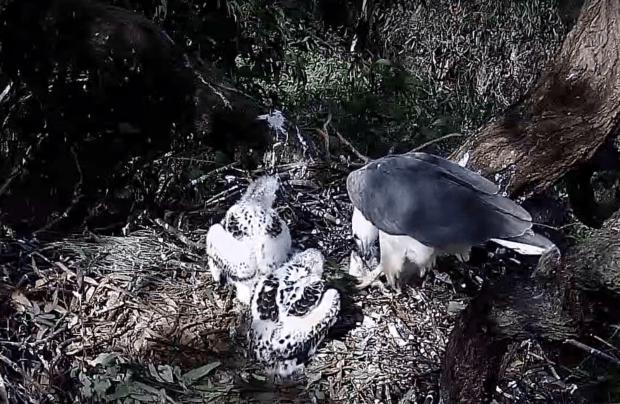
Lady makes sure that 30 gets fed.

Look at SE30 stand on its feet. I am not supposed to comment on the fat little bottoms and legs of the chicks! I did this last year with an image of the Melbourne falcons and caused quite the stir. Apparently the largest supplier of chicken legs and other parts is a company called Steggles. One of the FB comments said she couldn’t stop laughing and almost choked. — But seriously. Look at that tail and little bottom of 30…precious.


Thank you so much for joining me this morning. Have a wonderful Saturday. Stay safe! Take care of yourself. We will see you soon.
Thank you to the following for their streaming cams and/or posts that make up my screen captures: State Impact Oklahoma, Notre Dame Eagles, Dyfi Osprey Project, Patuxent River Park, Friends of Loch of the Lowes and Scottish Wildlife Trust,, LRWT, Charles Sturt Orange Falcon Cam, Port Lincoln Ospreys, and Sea Eagles@BirdLife Australia Discovery Centre Sydney Olympic Park.












